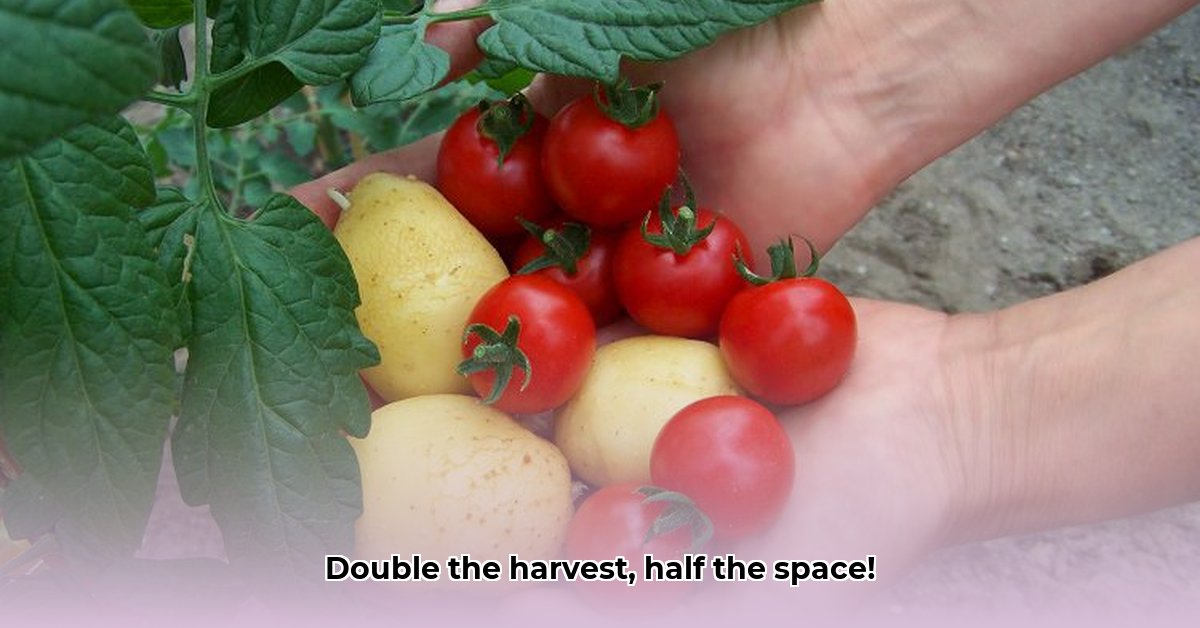
Pomato Plants: Double the Harvest, Half the Space
Imagine harvesting juicy tomatoes and delicious potatoes from a single plant! That’s the promise of the pomato, a clever grafting technique combining the best of both worlds. This isn't science fiction; it's a practical approach gaining popularity amongst home gardeners and small-scale farmers alike. This guide will walk you through everything, from choosing the right plants to harvesting your bountiful double crop. We'll explore the advantages and disadvantages, offering a realistic view of this exciting agricultural innovation. Whether you're a seasoned gardener or a complete beginner, get ready to discover the magic of the pomato!
What is a Pomato Plant?
A pomato isn't a new species; it’s the result of grafting (joining parts of different plants) a tomato plant onto a potato plant. The potato plant provides the robust root system, while the tomato plant contributes its above-ground fruiting capabilities. This results in one plant producing both potatoes underground and tomatoes above ground—a double harvest from a single plant! Grafting, an age-old practice, is the key to this fascinating plant phenomenon. It's a bit like a plant-based conjoined twin, sharing resources and producing a unique double harvest.
Advantages and Disadvantages of Pomato Cultivation
Let's weigh the pros and cons to see if pomatos are right for you:
Advantages:
- Space-saving: Double the yield in half the space, ideal for small gardens, balconies, and urban farming.
- Resource efficiency: One plant uses the same resources (water, fertilizer, space) to produce two harvests. This efficiency is crucial for sustainable farming.
- Novelty and Interest: Pomatos are a conversation starter—a unique and fascinating addition to any garden.
Disadvantages:
- Grafting Success Rate: The success of the grafting process isn't guaranteed. Factors like technique and plant compatibility play a significant role.
- Potential for Lower Overall Yield: While you get two harvests, the total yield might be lower than growing tomatoes and potatoes separately. This needs further investigation to provide certainty.
- Increased Disease Susceptibility: The combined root system increases vulnerability to diseases affecting either tomatoes or potatoes. Careful plant selection and monitoring are crucial.
Cultivating Pomatos: A Practical Step-by-Step Guide
Here’s how to grow your own pomatos:
1. Selecting Appropriate Varieties: Choose compatible tomato and potato varieties. Your local nursery can offer expert advice tailored to your climate. Consider disease-resistant varieties for a higher likelihood of success.
2. Preparing the Plants for Grafting: Ensure both plants are healthy and vigorous. Start from healthy seedlings (not seeds) for optimal success. Timing is key; aim to graft when both plants are young but actively growing.
3. The Grafting Technique: Several methods exist, including whip and tongue grafting and cleft grafting. Online resources and videos can provide visual guidance on the precise techniques, tools, and best practices. Ensure a clean, precise cut to maximize chances of successful fusion.
4. Post-Grafting Care: Handle the grafted plant carefully. Keep the soil consistently moist but well-drained, and provide support to prevent the graft from breaking. Regular monitoring is crucial to identify and address any problems.
5. Harvesting Techniques: Harvest tomatoes when fully ripe. For potatoes, wait until the foliage dies back—typically late summer or early autumn.
6. Troubleshooting Common Problems: Graft failure (often due to poor technique or incompatible varieties), disease, and pest infestations are possible challenges. Understanding these challenges and addressing them timely is key to success.
Pomato's Role in Sustainable Agriculture
The pomato presents exciting opportunities for sustainable agriculture. Its space-saving nature is especially relevant for urban farming and areas with limited land resources. The resource efficiency contributes to sustainable food production, reducing waste and improving overall efficiency.
Future Research and Development
While pomatos are exciting, further research is vital. This includes improving grafting success rates, developing disease-resistant varieties, and understanding their response to climate change. Genetic modification could offer potential benefits, but ethical and regulatory considerations need careful consideration. Research into optimal growing conditions for various climates is also ongoing.
This article is based on current research and knowledge. Consult reputable sources for further information.